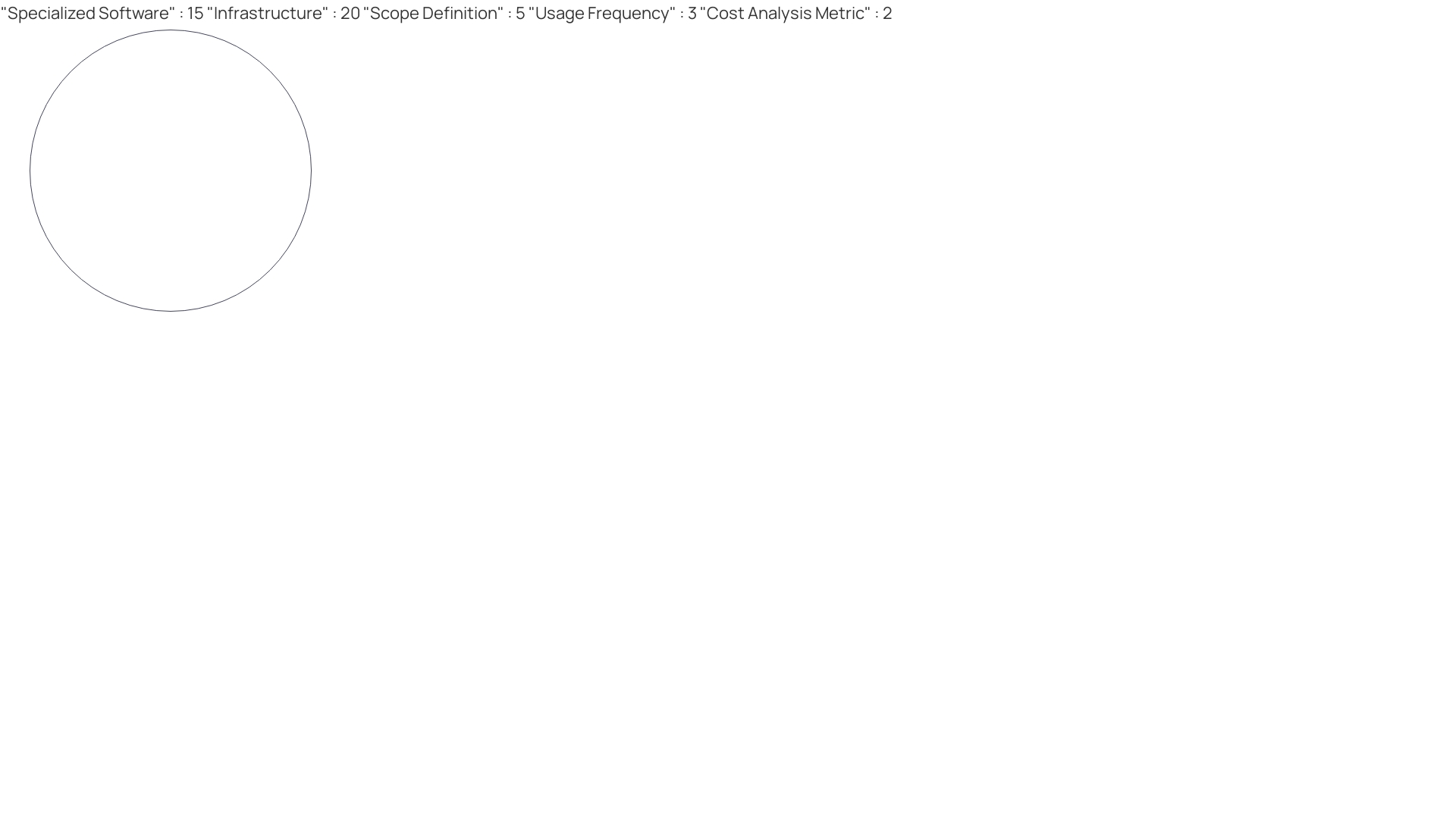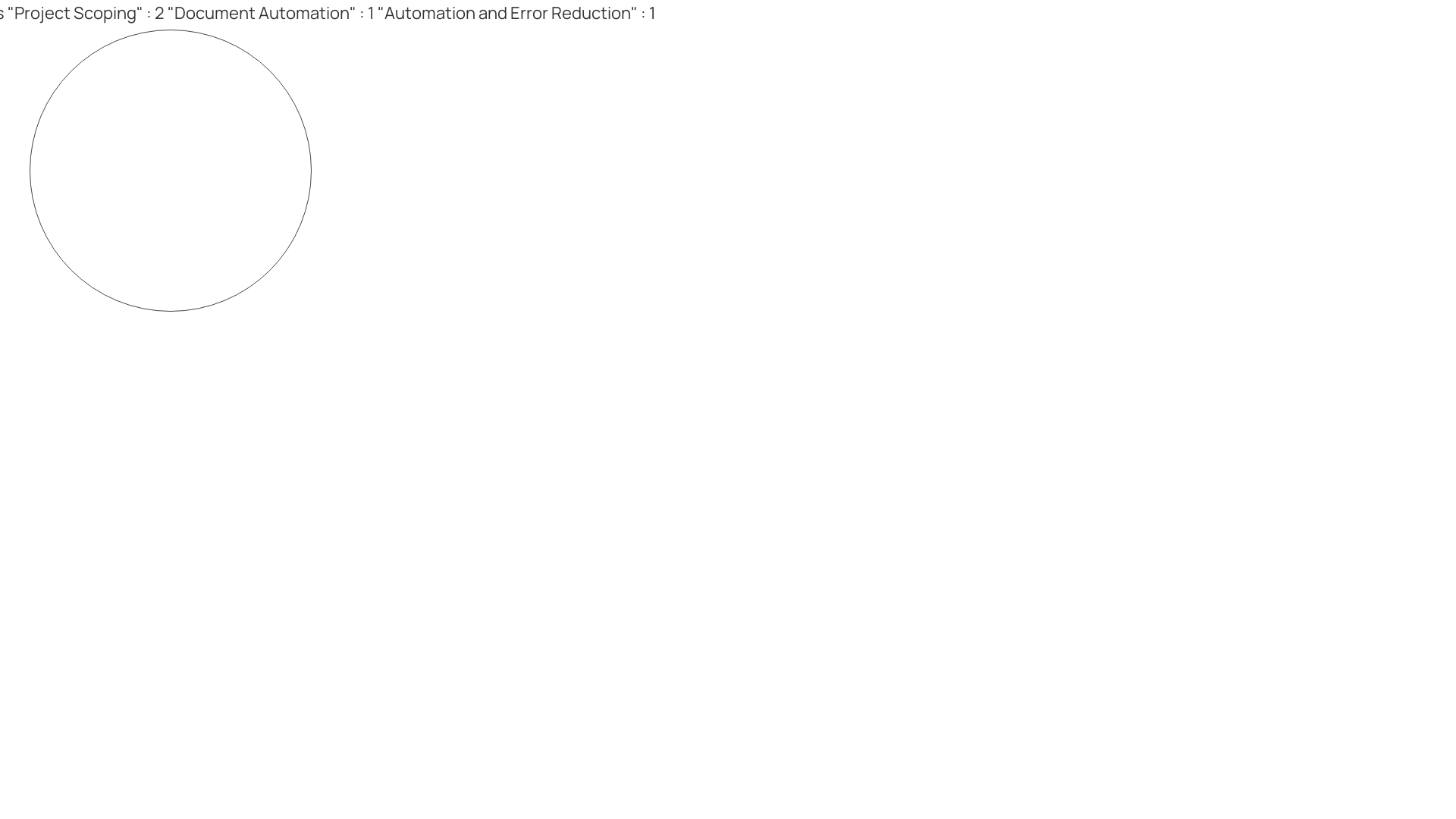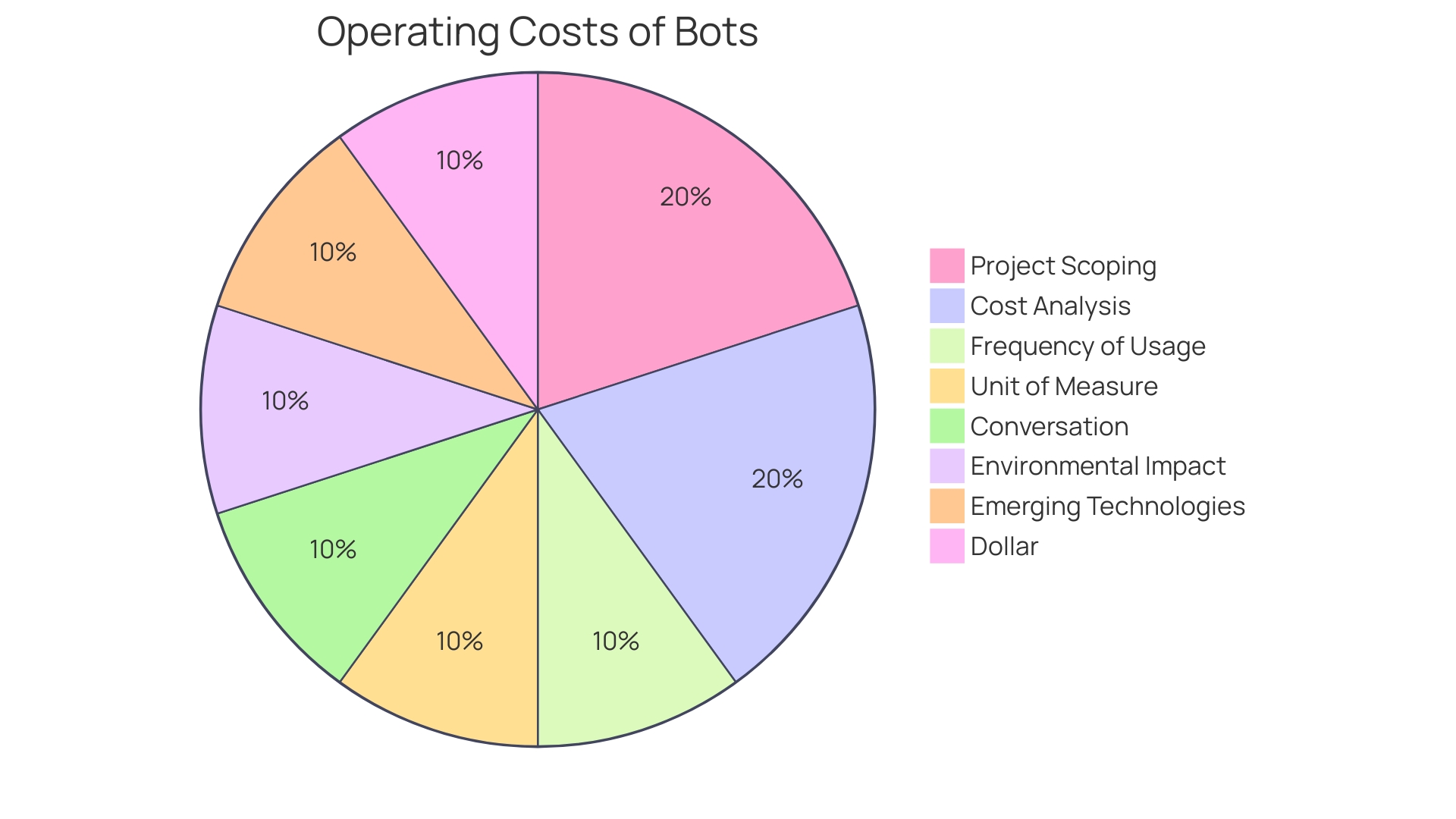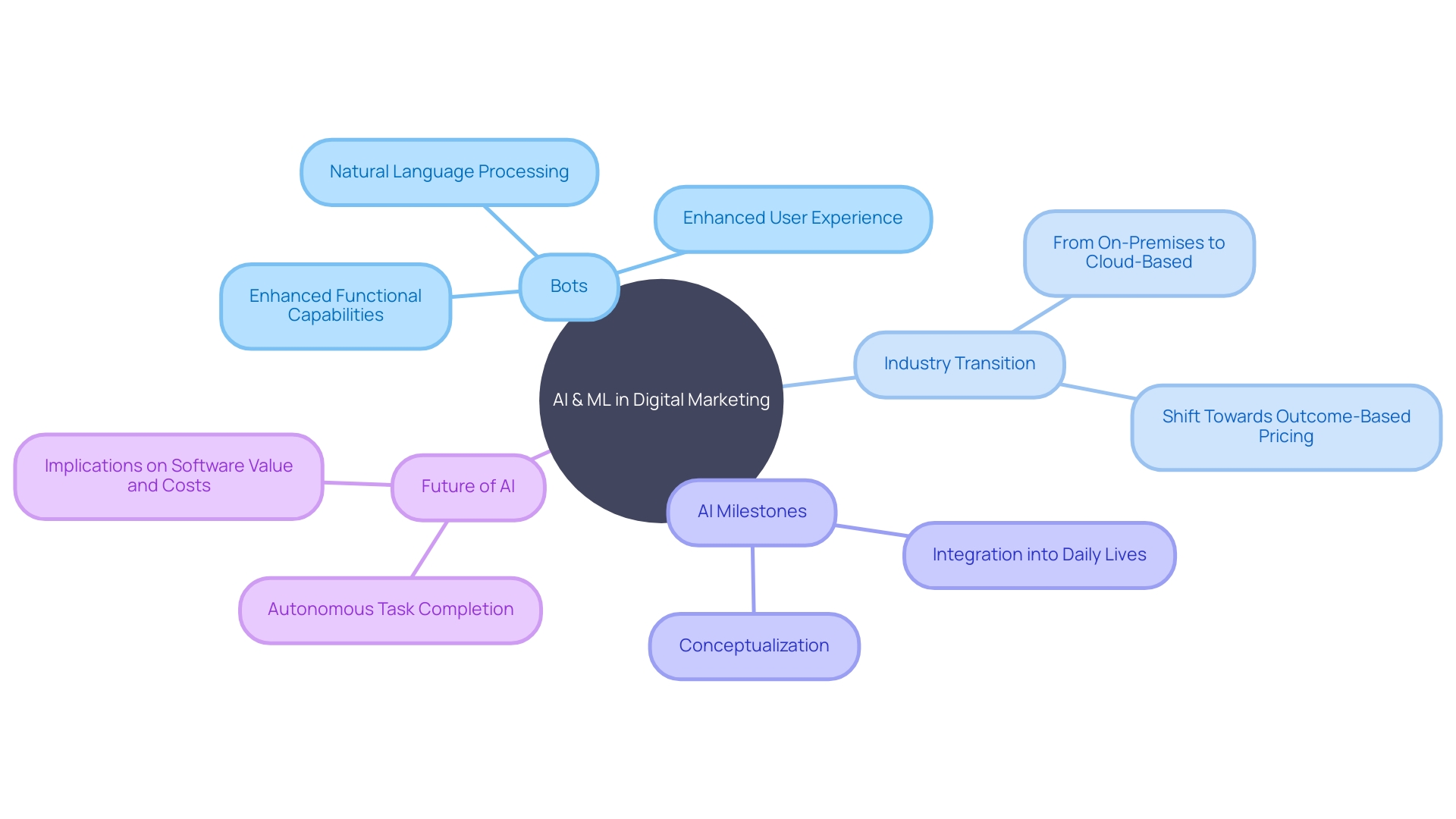Introduction
Navigating the world of bot implementation for digital marketing can be a complex task, especially when considering the factors that significantly influence costs. From hosting options to website maintenance, artificial intelligence integration, and scalability, each aspect must be evaluated meticulously to construct a comprehensive and fiscally responsible plan.
Additionally, hardware and software expenses, development and maintenance costs, customization, and hidden costs such as energy consumption and environmental impact play a critical role in determining the overall pricing. In this article, we will delve into the various factors that affect bot costs, providing insights and recommendations to help businesses make informed decisions in their digital marketing strategies.
Factors Affecting Bot Costs
Navigating the pricing landscape of bot implementation for digital marketing requires a deep dive into several factors that impact costs significantly. Recognition of existing capabilities alongside desirable and essential features sets a foundation for decision-making, ensuring businesses avoid vendors lacking critical functionalities.
When embarking on the intricate journey of understanding bot expenses, one must consider factors such as hosting options, which range from shared hosting to more advanced dedicated servers and cloud hosting services. Such decisions are vital, as hosting costs are greatly influenced by the provider, the plan selected, and the unique needs of the website at hand.
Furthermore, website maintenance emerges as a multifaceted endeavor, demanding attention encompassing hosting, security, regular content updates, and technical upkeep, all of which play a pivotal role in performance optimization. Acknowledging the dynamic nature of websites as digital assets, they undeniably shape user experiences and necessitate proactive management to avoid adverse repercussions.
Artificial intelligence, which forms the backbone of modern bots, continues its ascendance, evolving from mythical automata like the guardian Talos of Crete to sophisticated systems interlaced with our daily activities. The integration of AI into bots for digital marketing is not just a strategic choice but a reaction to the inevitable progression of technology, where intelligence demonstrated by machines aligns with tasks formerly requiring human intelligence. Costs are further clarified through rigorous project scoping, discerning both frequency of usage and the proper unit of measure for cost analysis. Statistically speaking, conversational interactions serve as a quantifiable metric in robust cost analysis endeavors, providing clarity and aiding in forecasting budgetary allocations for bot integration, as detailed in our October 2023 review, emphasizing the ubiquity of the dollar as a standard currency. Overall, when considering the cost implications of incorporating bots into digital marketing strategies, it is paramount to meticulously evaluate these intertwining factors to construct a comprehensive and fiscally responsible plan.
Hardware and Software Expenses
When anticipating the expenses involved in bot development, it's essential to consider the technical resources needed to enable their optimal performance. This includes investment in high-grade servers and significant computing capabilities to support intricate bot functions.
Moreover, specialized software is a necessity, often entailing an additional financial outlay. These foundational components dictate the infrastructure costs which are integral to bot deployment.
Concurrently, the scope of the bot's application must be meticulously defined to cater to actual user needs, preventing cost overruns. The frequency of bot usage and the chosen metric for cost analysis, such as per interaction or conversation, are critical considerations.
Estimations for sophisticated technologies like Internet of Things (IoT) can range dramatically, reflecting the diversity in application, operational scale, and industry. While determining the budget for such technology implementations, numerous factors must be accounted for, spanning hardware to manpower. Cost-efficiency hinges on identifying the specific requirements and utilities of end-users, safeguarding against excessive, unchecked expenditure. Indeed, the currency of cost measurement is standardized to the dollar, simplifying comparisons and evaluations across varying project scales and service providers, effective as of October 2023.

Development and Maintenance Costs
Crafting an effective bot is not just a task; it's an ongoing commitment to excellence. It begins with a detailed project scoping to comprehend the end-user's requirements. This critical phase ensures that the bot is tailored to address specific needs, enhancing the value it brings to various groups of your audience.
Moreover, the complexity of creating a bot is not only about its initial development. It has to be nurtured continuously with regular maintenance and updates, akin to renewing a domain, marking an enduring relationship with the development team. Each conversation with your bot is an opportunity to impress your users.
That's why frequency of use and conversations are the unit of analysis for costs. The usage patterns of your bot directly influence both development and operational expenses. To remain ahead in the dynamic digital ecosystem, bots need to evolve with user expectations and market trends—this requirement for iterative improvements stems from necessity, not choice.
Website maintenance as illustrated by the refinement of hosting services, including shared, dedicated, or cloud hosting, each carries its unique price tag and set of benefits. It's not just the cost but the impact on the user experience that counts, as neglected bots can lead to diminished user engagement and potential losses. By considering these facets, a bot becomes more than a programmed entity; it becomes a pivotal digital asset, fostering convenience and ensuring security for both developers and users alike.
Scalability and Customization Impact on Pricing
When determining the cost of developing and implementing bots, one of the primary factors to consider is their ability to manage substantial volumes of interactions while being tailored to specific company needs. Bots with high scalability that accommodate intense interaction frequency can provide immense value.
However, they often come at a higher cost. The customization aspect is equally important; the effort required to align a bot's functionality with unique business processes and the target audience's expectations can significantly affect the price.
It's essential to examine the bot's flexibility and the potential complexity of integrating it into the business workflow. An accurate project scoping is vital, requiring a deep understanding of not only the end-user's needs but also the long-term usage expectations and measures of cost analysis. This comprehensive approach ensures the creation of not only a functional tool but also an effective business resource.
Comparing Costs Across Different Types of Bots
Assessing the cost of automated tools requires a deep dive into their unique functionalities and the scope of the project. A chatbot designed to enhance customer support differs drastically in cost from a web scraping bot tasked with data extraction. Why?
Because their deployment reflects varied complexities. Potential costs revolve around the end-user's needs, which means defining the frequency of tool usage and identifying the appropriate metrics for cost analysis. With costs typically calculated in conversations, considering both the qualitative and quantitative elements is crucial for a comprehensive fiscal overview.
Moreover, staying current is non-negotiable in today's evolving digital marketplace. Aligning with recent advice, businesses should assess digital tools by considering the capabilities already in place, those desired, and those essential to operations—a methodology advised by industry peers and experts. This strategic approach ensures that investments are directed towards vendors that offer necessary features, maximizing the utility and efficiency of implemented bots.

Hidden Costs: Infrastructure, Energy, and Compute Power
Operating bots entails a suite of costs that extend beyond the initial setup and routine maintenance. Key among these is the impact of energy consumption on both operational expenditures and the environment.
Energy needs, dictated by hosting requirements and computational demands to maintain bot efficiency, are not negligible. The interaction with cloud services introduces another layer of complexity to the equation; these services generate carbon emissions dependent on the energy mix of their respective grids.
Moreover, as highlighted by the work of Alex de Vries, a PhD candidate at VU Amsterdam School of Business and Economics, the digital arena has unintended environmental consequences. De Vries' work emphasizes the significance of considering the carbon footprint of emerging technologies, including the bot services utilized by businesses. The costs incurred by energy usage and associated CO2 emissions vary depending on the location and the composition of the energy grid, with carbon-intensive sources evidently contributing to a larger environmental impact. These considerations are of increasing importance as market trends shift towards greater environmental awareness, and businesses must account for these 'hidden costs' when implementing new technologies to ensure alignment with consumer values and sustainable practices.

The Role of AI and Machine Learning in Bot Pricing
Artificial intelligence (AI) is a transformative force in technology, giving bots the ability to perform complex tasks that once necessitated human intelligence. With AI, software can now understand and learn from interactions to deliver intelligent and tailored solutions.
Similarly, machine learning (ML) allows systems to evolve and enhance their decision-making through data analysis. Integrating AI and ML within bots enriches their functional capabilities substantially, incorporating natural language processing that mirrors human conversation, enhancing user experience.
However, the advancements of AI and ML come at a price. As AI inventions progress, they demand substantial amounts of data – the fuel for these systems.
Protecting and managing this data is critical in an era where it's instrumental for improved marketing performance. The inclination towards AI in digital marketing reflects a wider movement in the software industry, transitioning from on-premises solutions to sophisticated, cloud-based services, which adapt over time to optimize outcomes for users.
This evolution signifies a shift from perpetual licensing to subscription-based models, and now to potential outcome-based pricing that AI could introduce. The statistics emphasize the rising ubiquity and long-standing human fascination with artificial intelligence. From mythology to modern times, the journey of AI has been marked by significant milestones, evolving from a concept to an integral part of our daily lives. With the emergence of tools like DALL-E 2 personalizing artificial intelligence, we've observed a monumental leap. The future holds a promise of AI that not only augments but also autonomously completes tasks, further affecting how software is valued and, consequently, its associated costs.

Cost-Benefit Analysis for Bot Implementation
Determining whether to implement bots as part of your digital marketing strategy is analogous to Stark Industries optimizing its tech: the right choice could substantially elevate your operation's efficiency. It's essential to consider not only the possibility of heightened productivity and enhanced customer experience but also to perform a solid analysis of costs versus benefits. One must calculate the potential monetary value of automation by comparing the time it takes a person to complete processes manually versus with automation.
For instance, understanding and leveraging tools, such as the Bilan Carbone method to measure your digital campaigns' carbon footprint, can illustrate how sustainability contributes to favorable business outcomes. Crucial steps include identifying your business's current capabilities with digital events platforms (DEPs), understanding what additional features you need, and consulting with marketing peers to zero in on appropriate vendors. By scrutinizing these considerations and aligning them with the upward trend of market fit and consumer insights, you can illustrate a clear picture of the bot's role and potential ROI for your business strategy.
Conclusion
In conclusion, when implementing bots for digital marketing, careful evaluation of various factors is crucial in determining costs. Key considerations include hosting options, website maintenance, AI integration, scalability, hardware and software expenses, customization, and hidden costs like energy consumption.
It's important to invest in high-grade servers and specialized software to optimize bot performance. Development and maintenance costs are ongoing commitments that ensure user satisfaction and market relevance.
Scalability and customization impact pricing, with more complex and adaptable bots carrying higher costs. Comparing costs across different bot types requires analyzing functionalities and project scope.
Hidden costs related to infrastructure, energy consumption, and environmental impact should not be overlooked, aligning with sustainability practices and consumer values. Artificial intelligence and machine learning enhance bot capabilities but require substantial data. Before implementing bots, conducting a cost-benefit analysis considering productivity gains, customer experience, and the monetary value of automation is essential. In summary, businesses must evaluate factors strategically to develop a comprehensive and fiscally responsible bot implementation plan. By doing so, they can maximize the efficiency and effectiveness of bots, contributing to successful digital marketing strategies.





